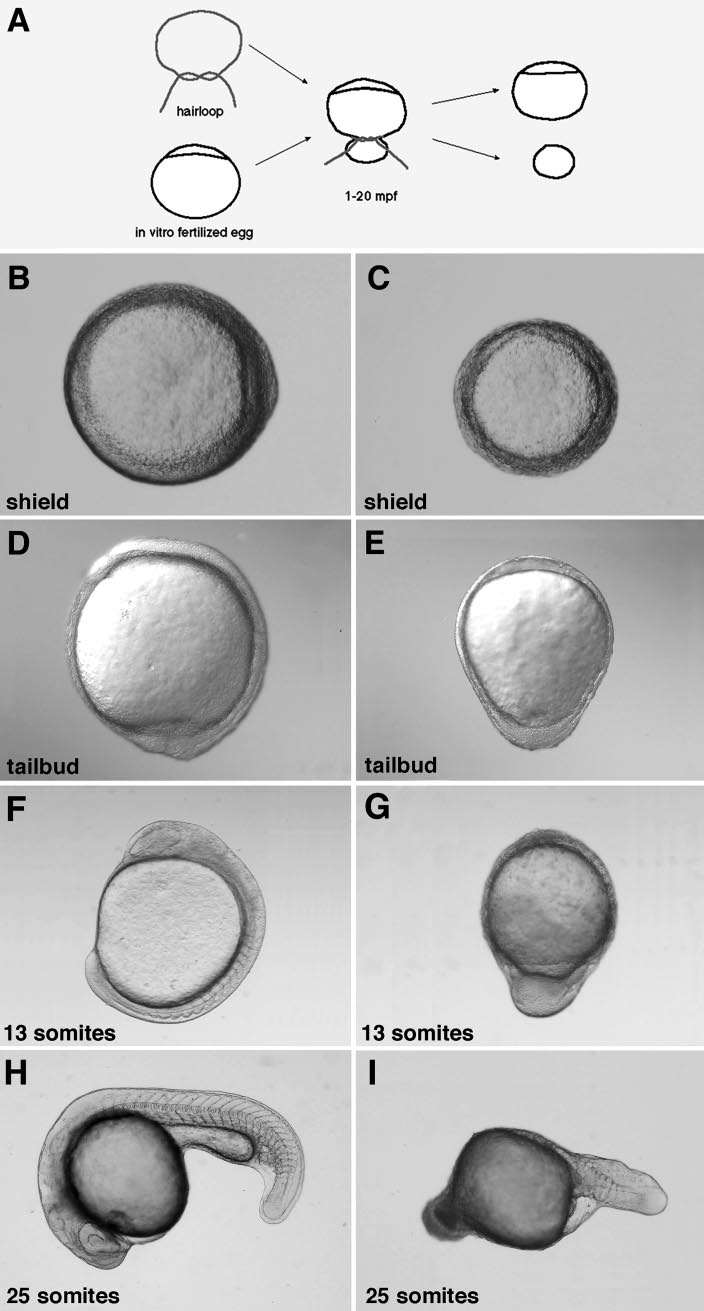Fig. 3 The vegetal part of the yolk cell contains all information necessary to establish dorsoventral polarity and the anterior region of the embryo. (A) The most vegetal part of the yolk cell can be ligated off within the first 20 mpf using a hairloop. (B, C) After 6 h of development morphogenetic movements form a shield at the future dorsal side of an untreated embryo (B), whereas in a ventralized embryo only involution occurs, resulting in a completely radialized embryo. (D, E) Convergence and extension movements lead to the formation of an axis at the dorsal side of the embryo (D), whereas experimental embryos (E) are completely radialized. (F, G) Thirteen somites have formed after 15 h of development in untreated sibling embryos (F), whereas no somites have developed in embryos lacking the vegetal-most part of the yolk cell (G). (H, I) At a stage when the untreated embryo has formed 25 somites, only 11 somites are developed in the experimental case. (B, C) Animal view, dorsal to the right; (D–G) lateral view, dorsal to the right; (H, I) lateral view, dorsal up.
Reprinted from Developmental Biology, 215(2), Ober, E.A. and Schulte-Merker, S., Signals from the yolk cell induce mesoderm, neuroectoderm, the trunk organizer, and the notochord in zebrafish, 167-181, Copyright (1999) with permission from Elsevier. Full text @ Dev. Biol.

